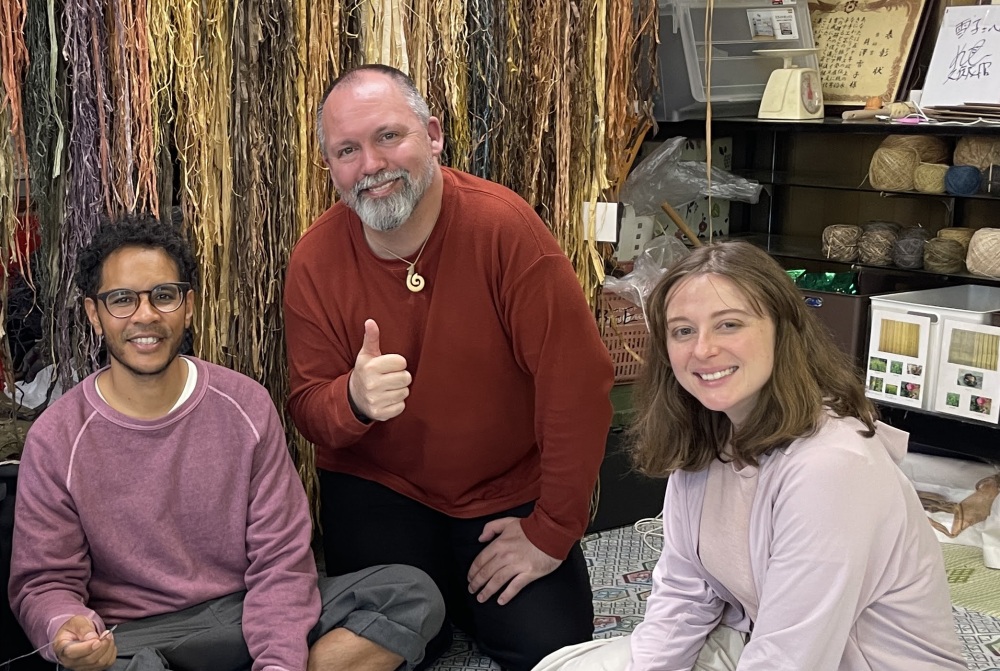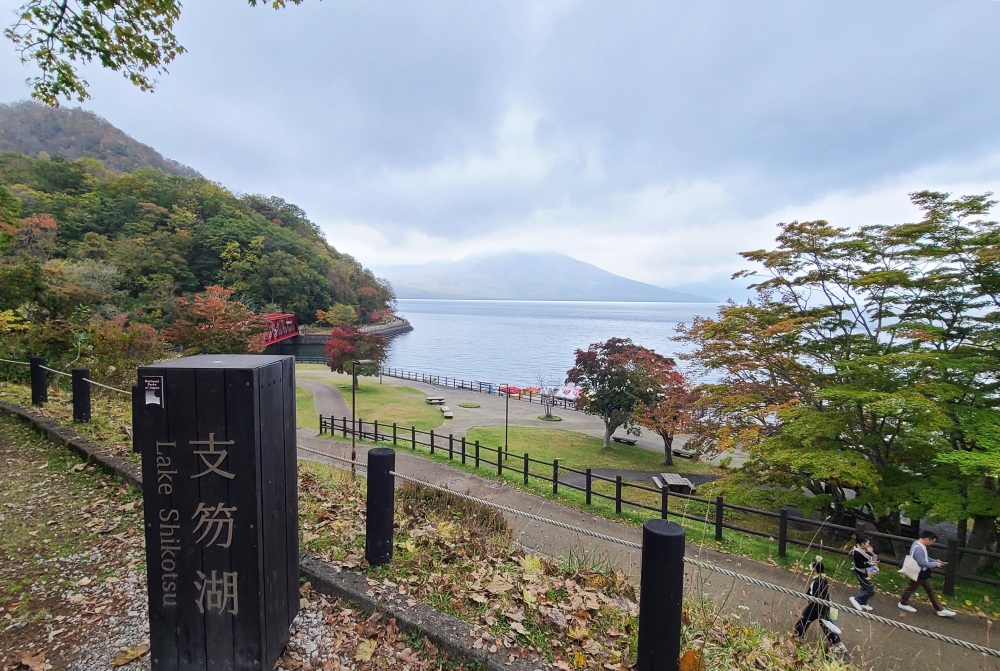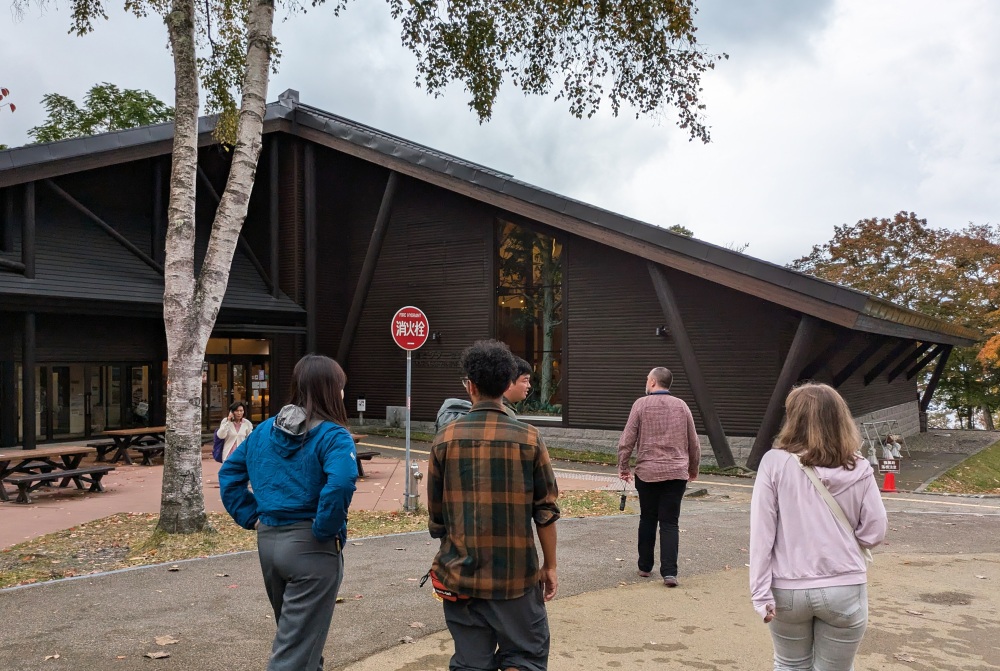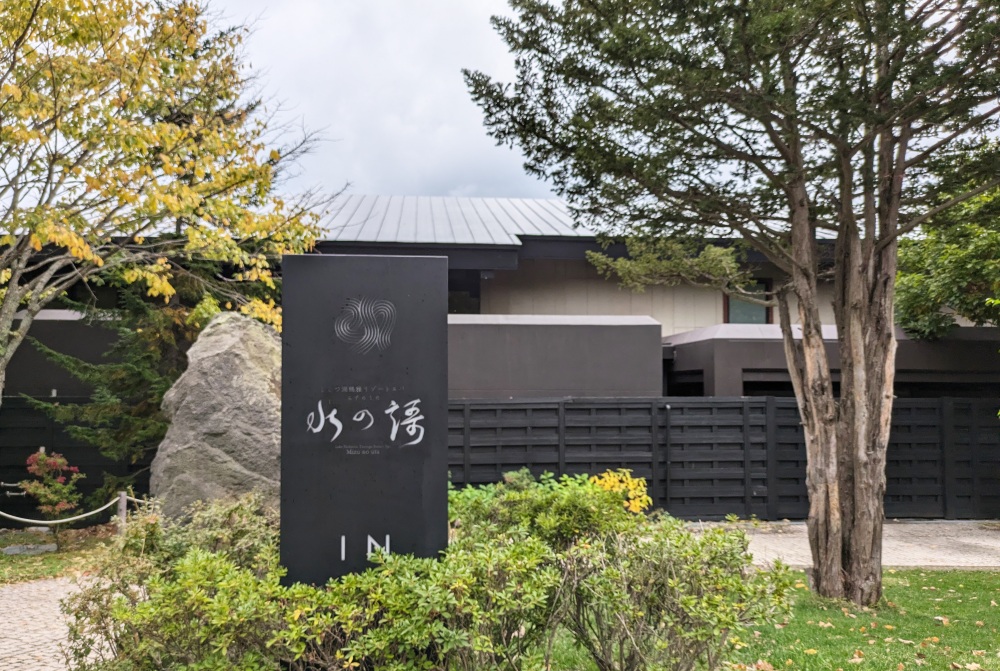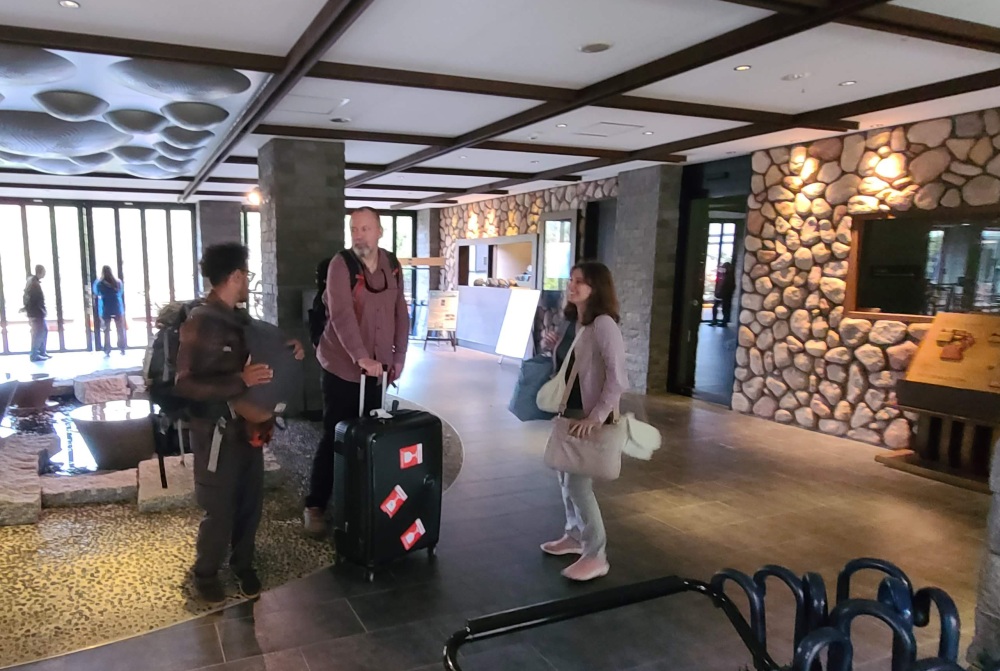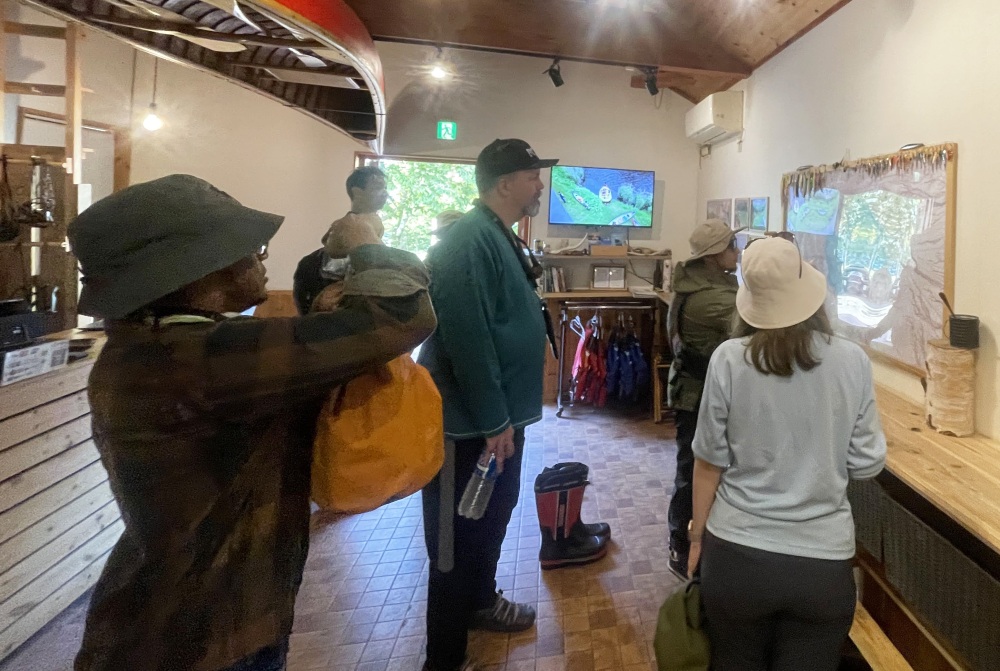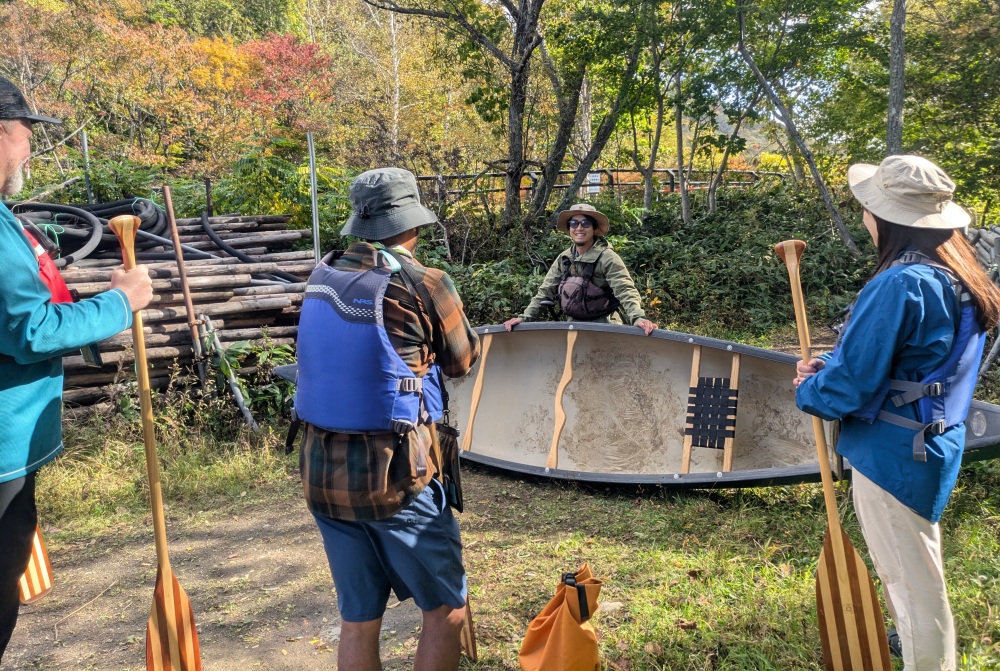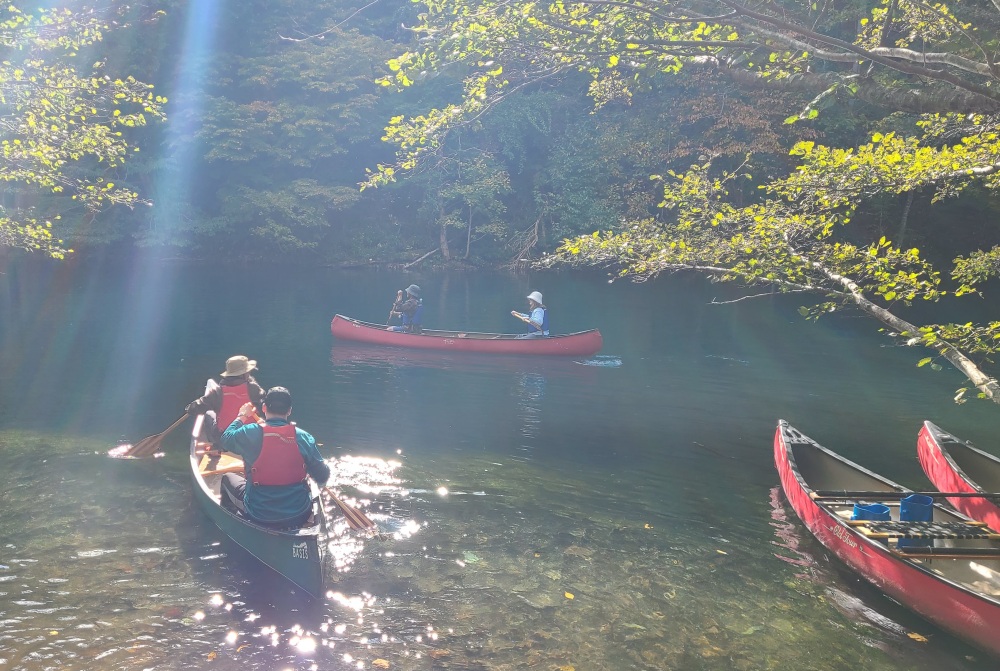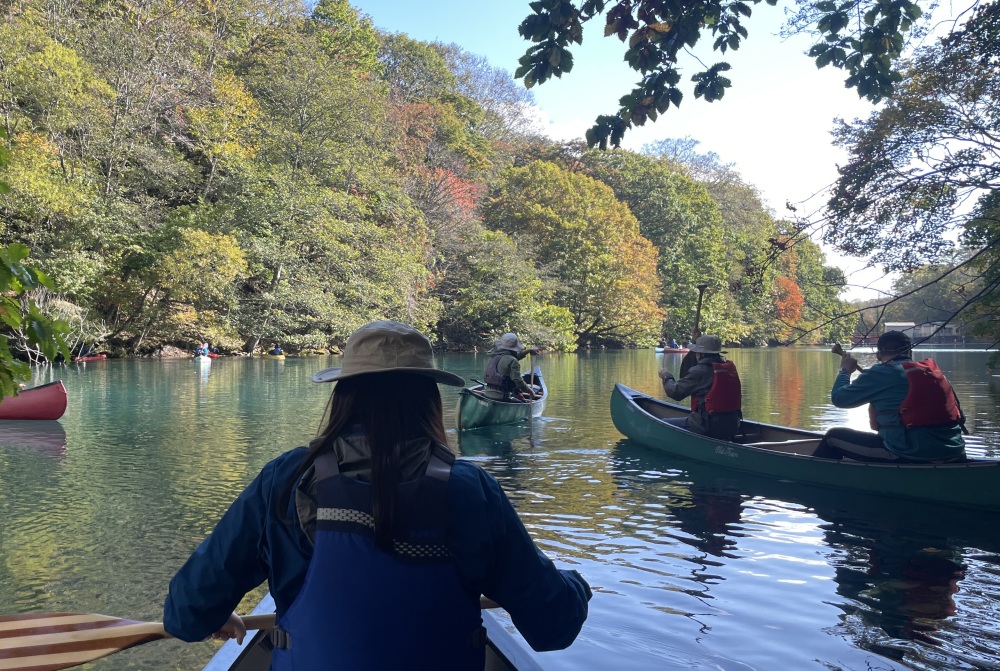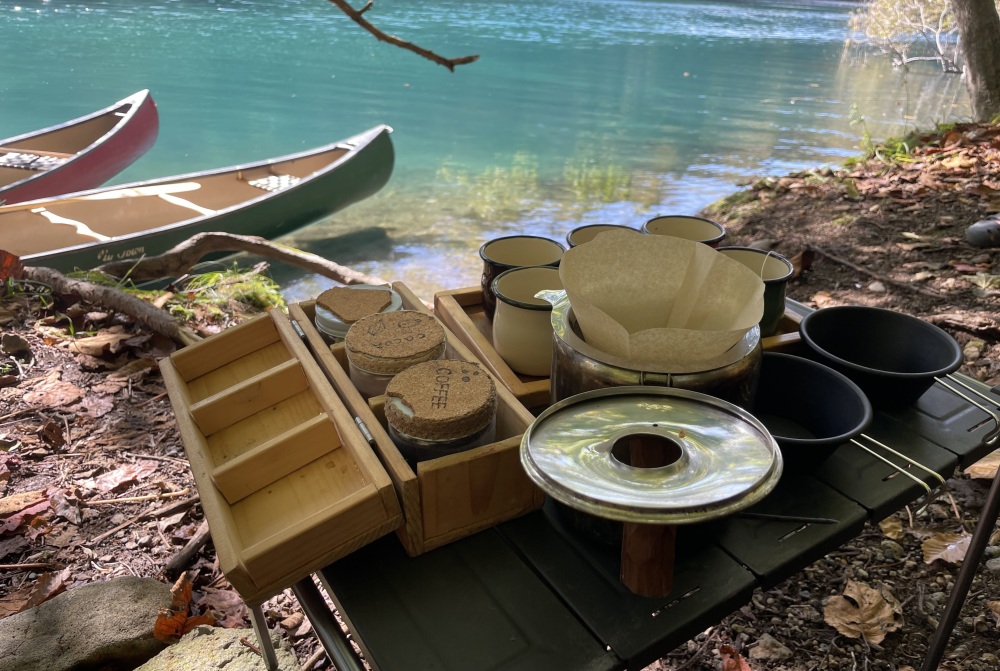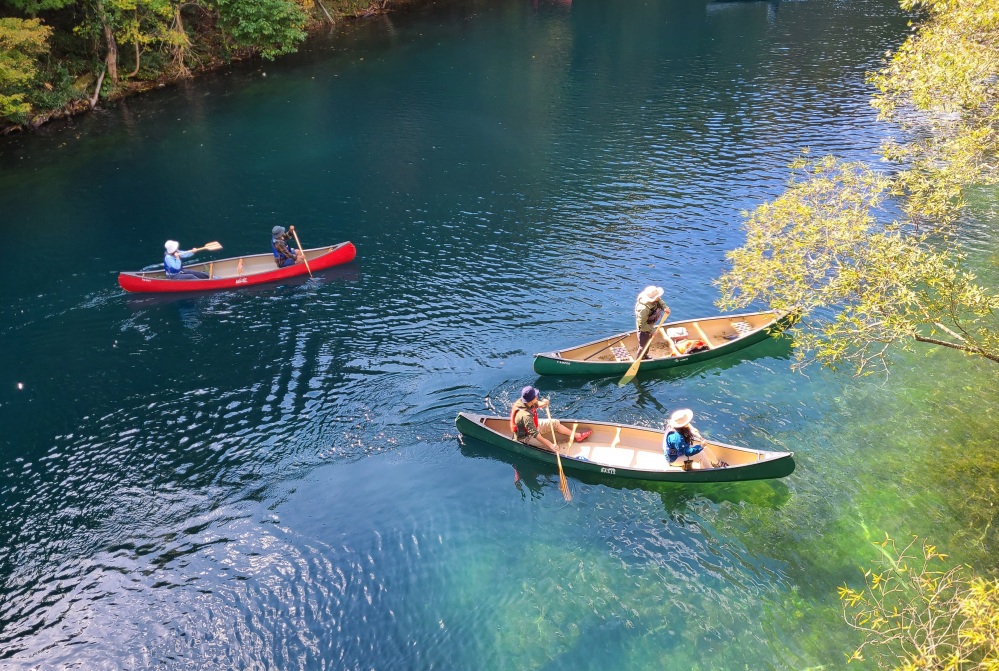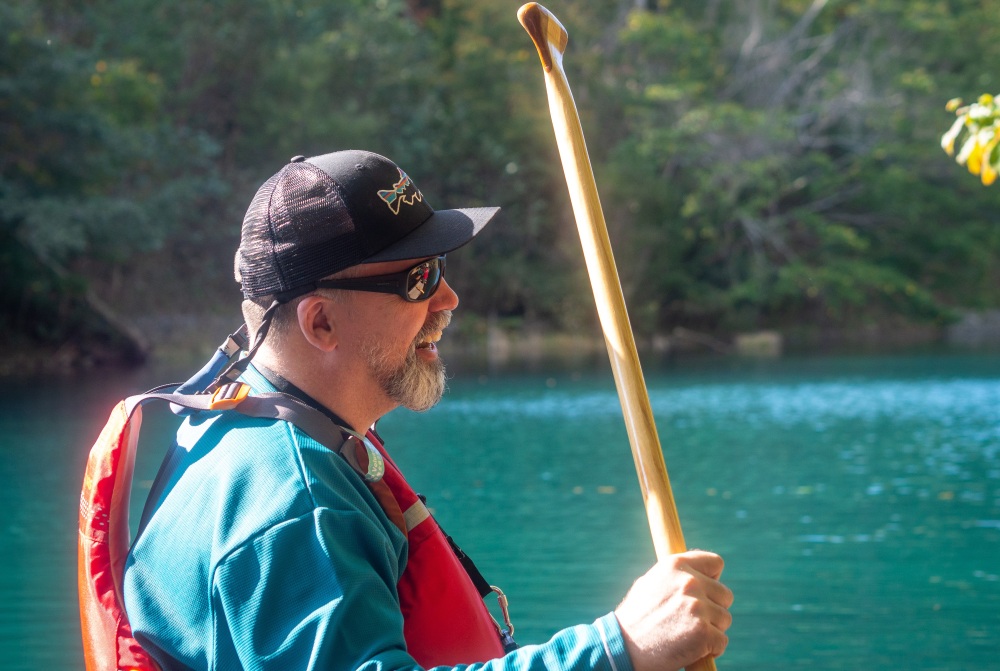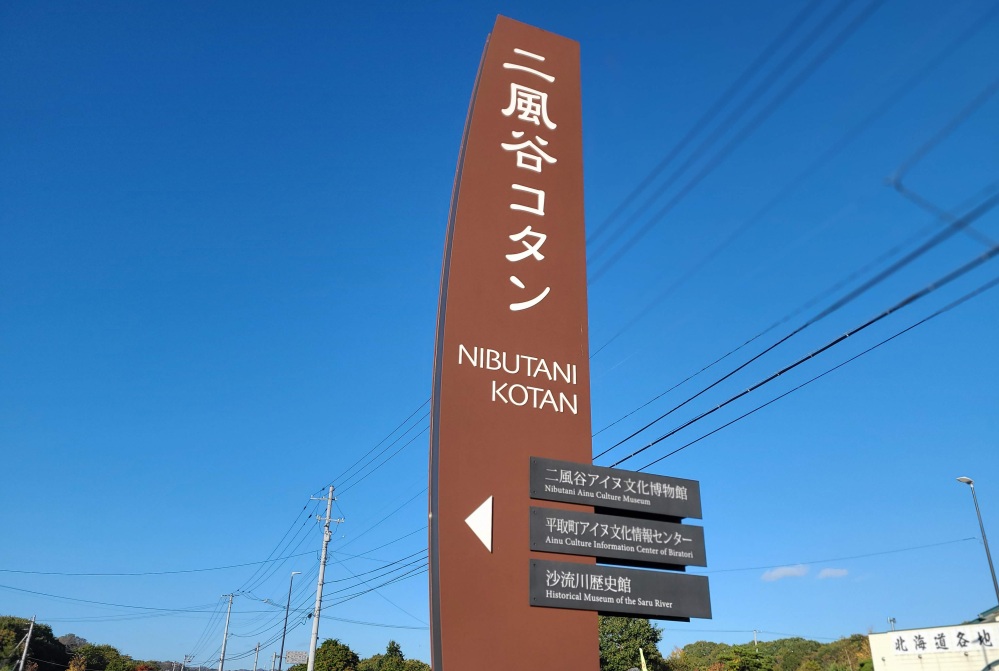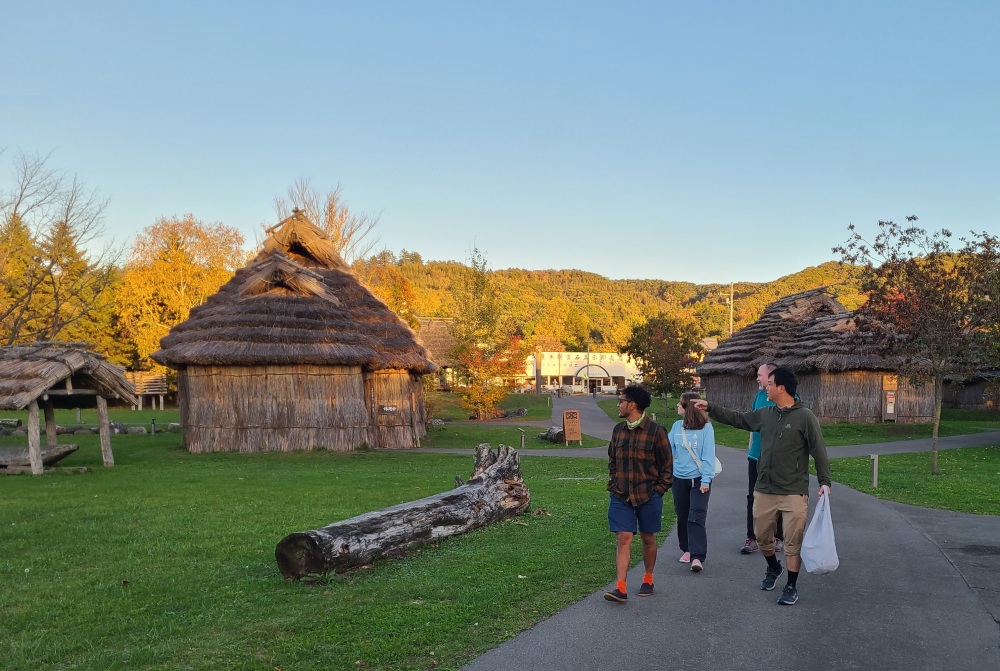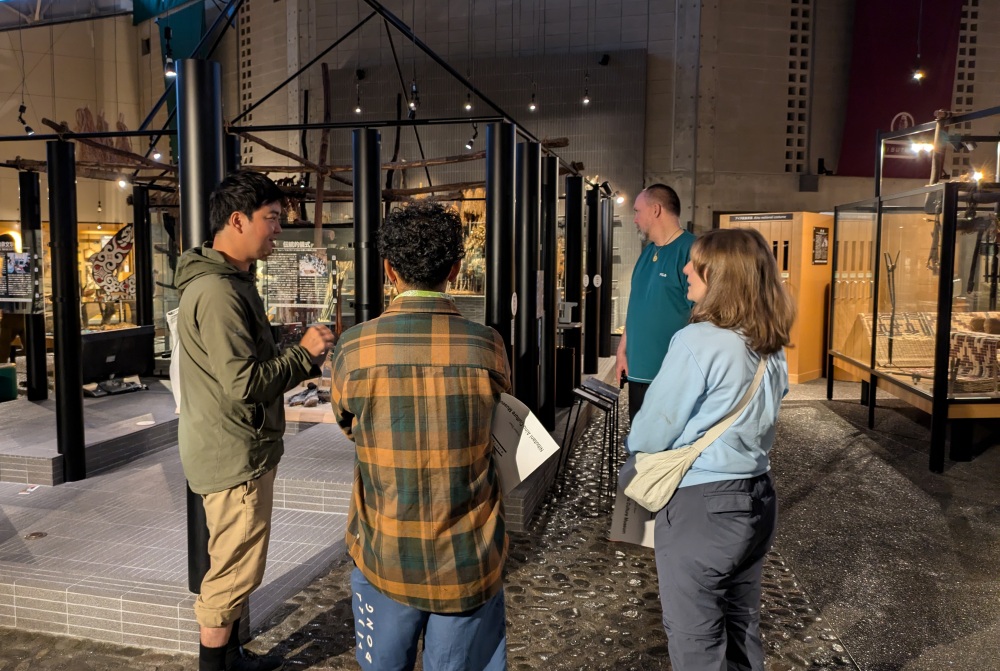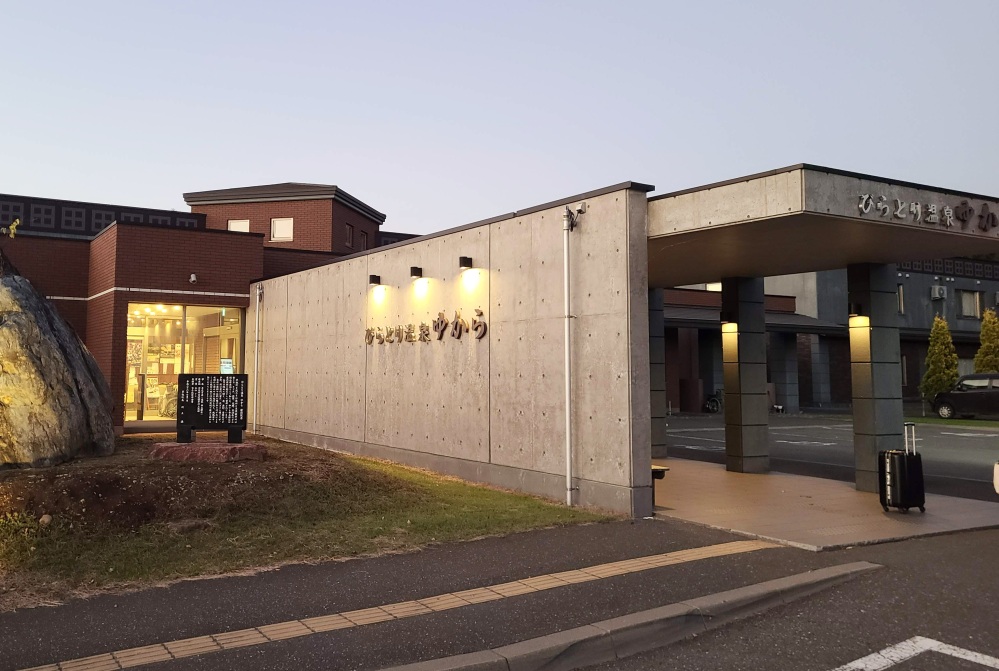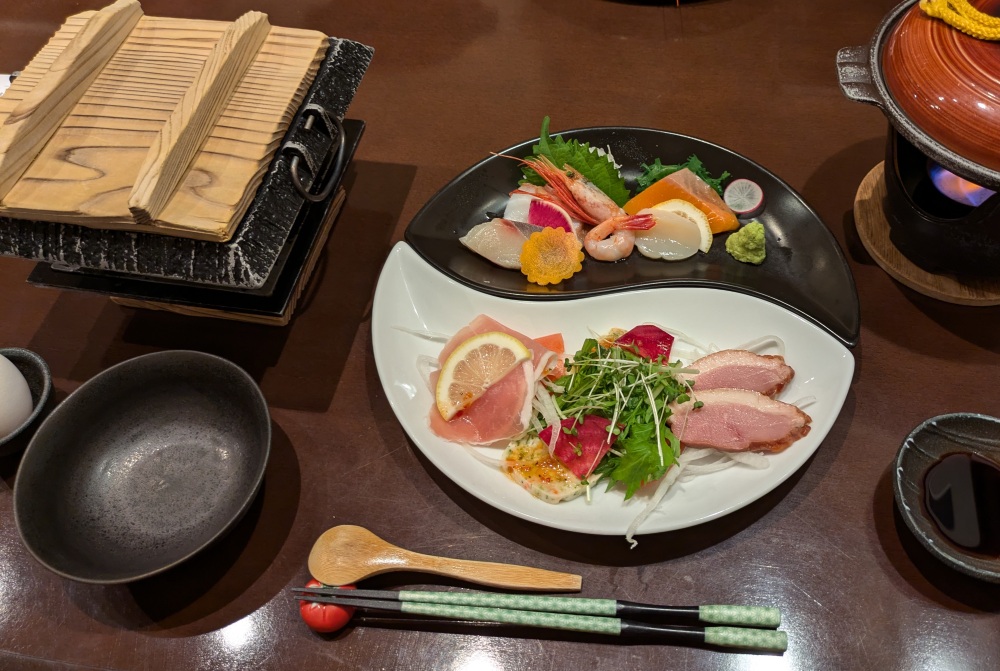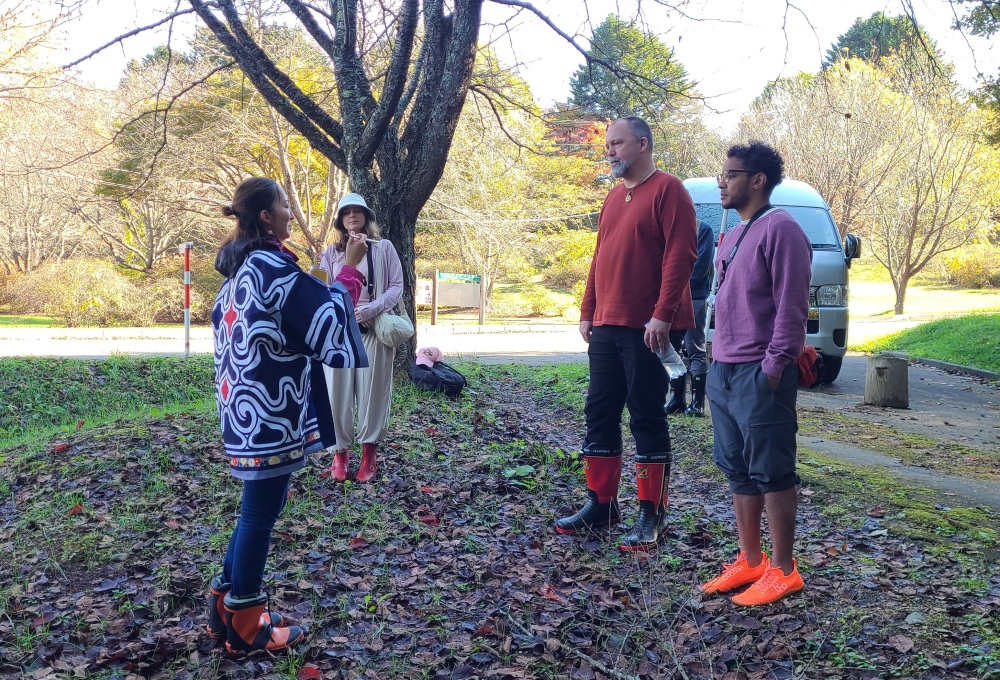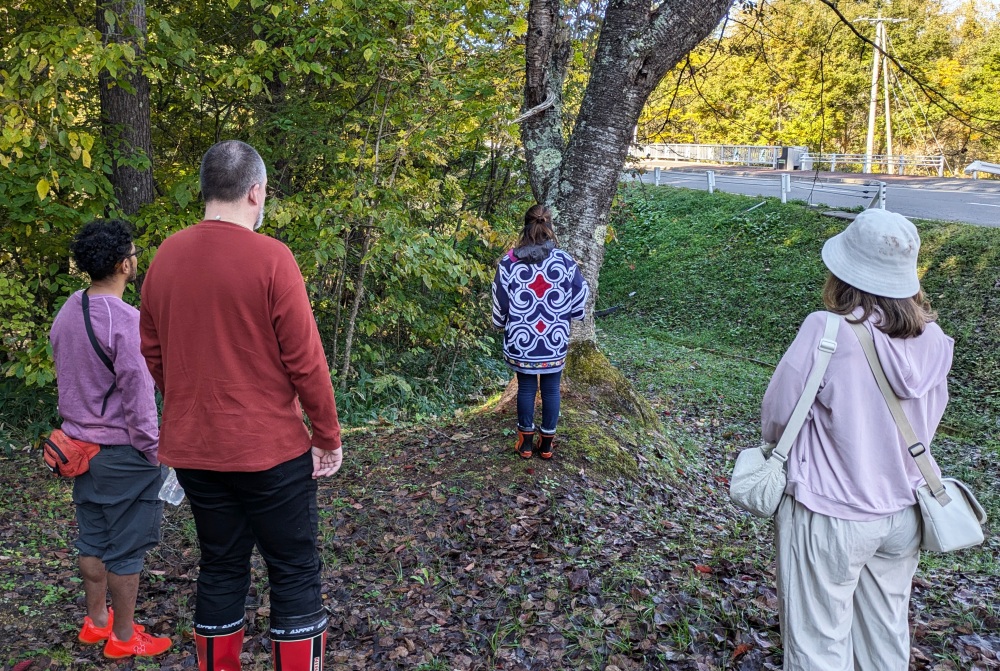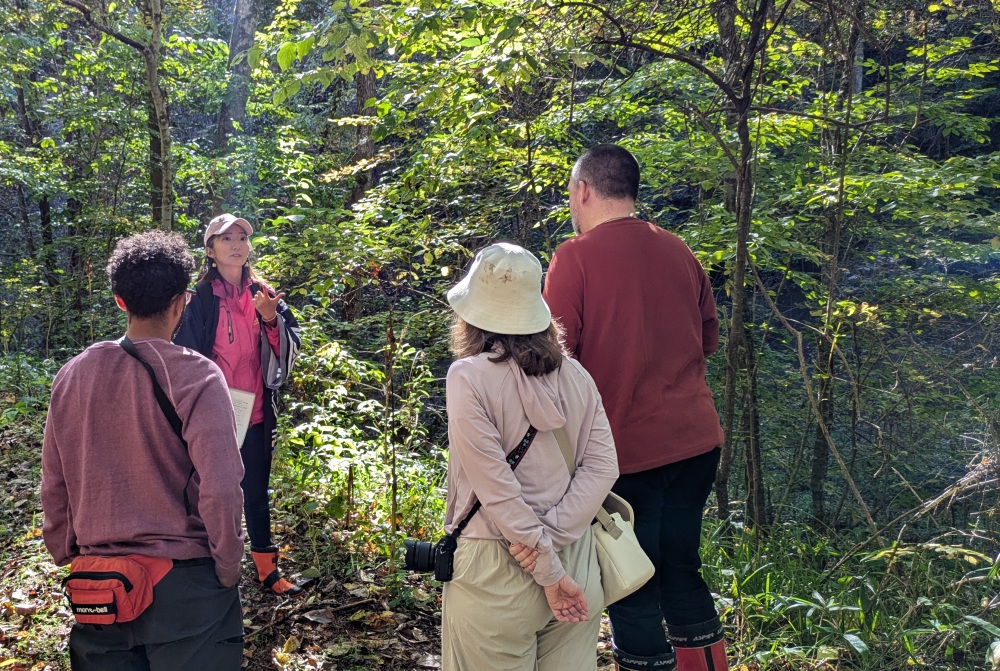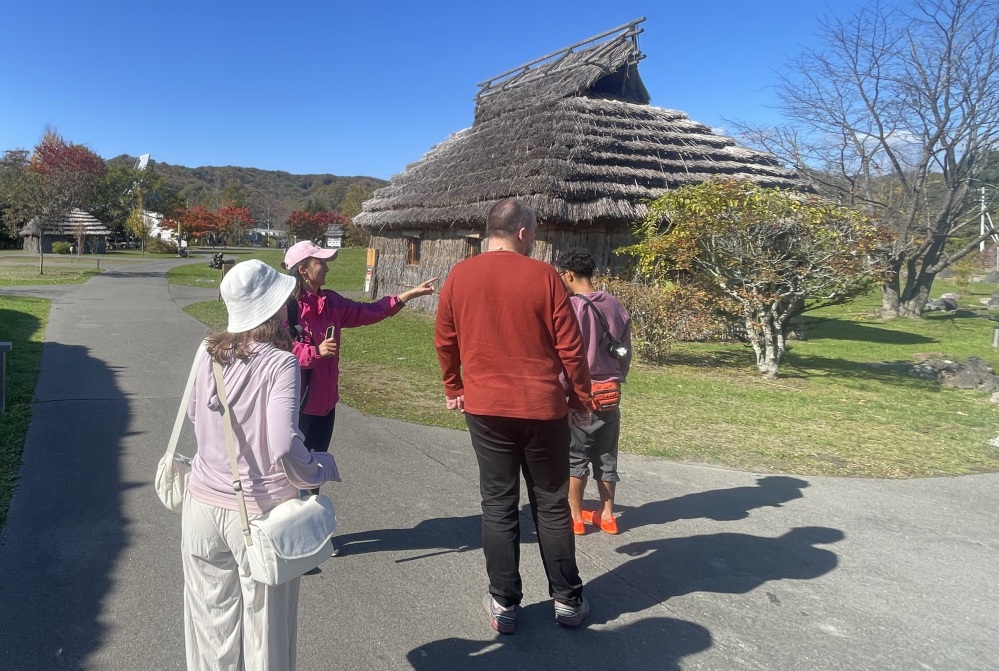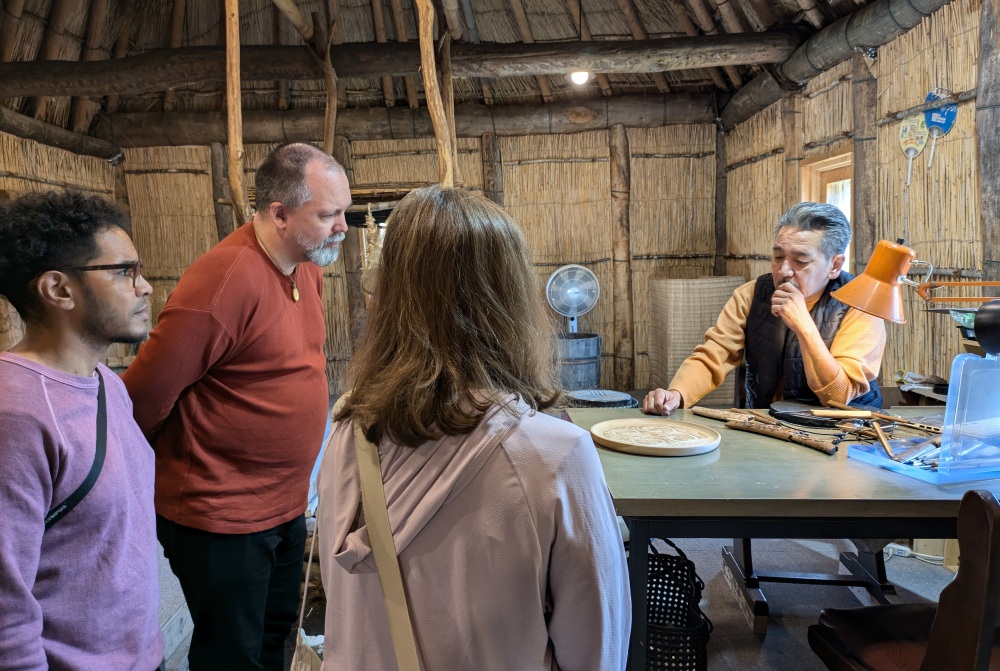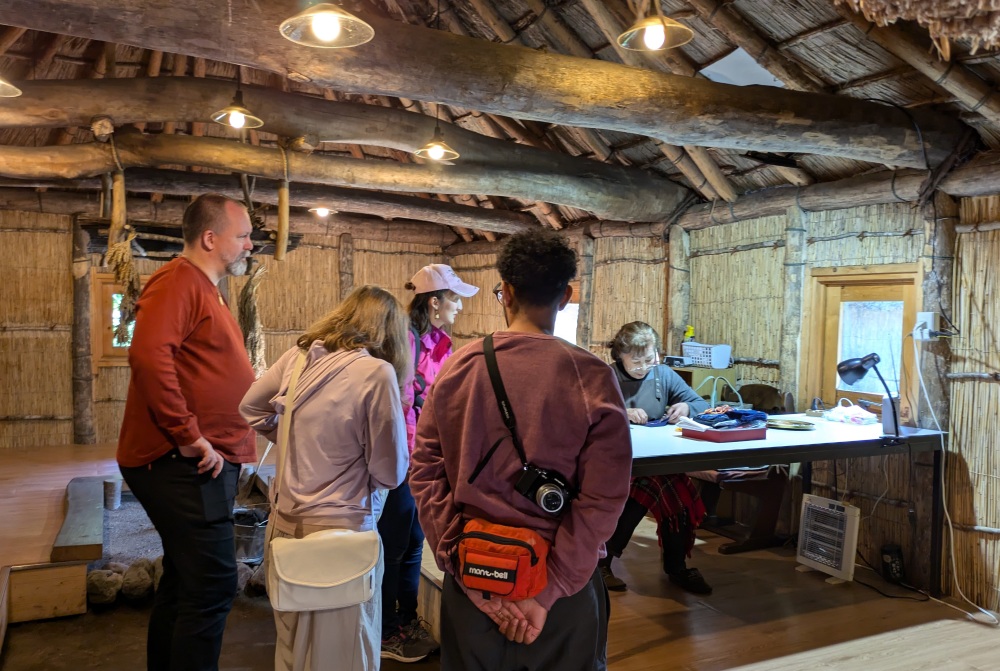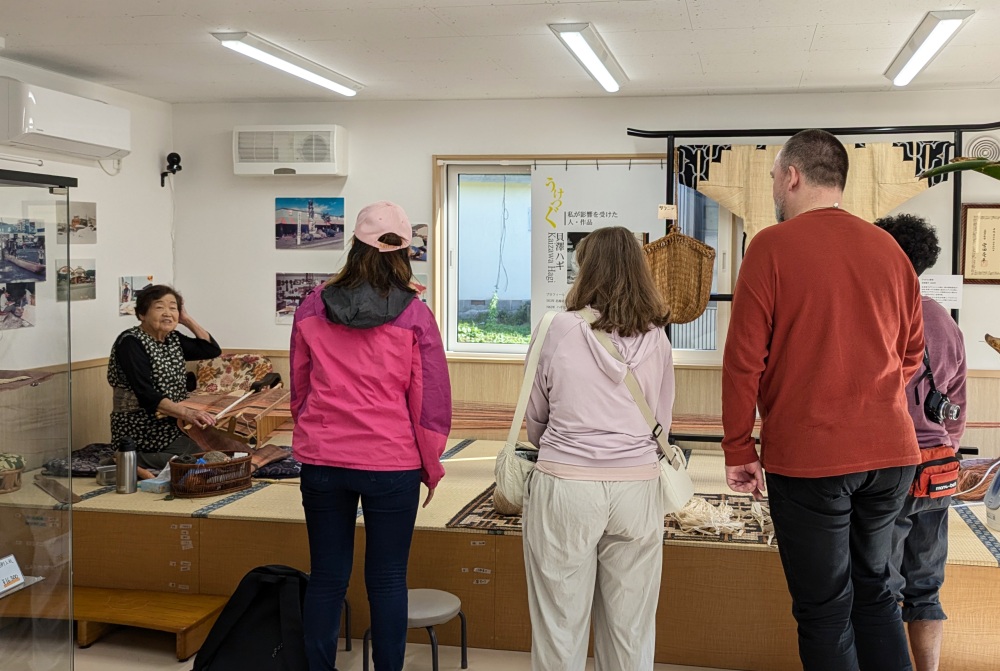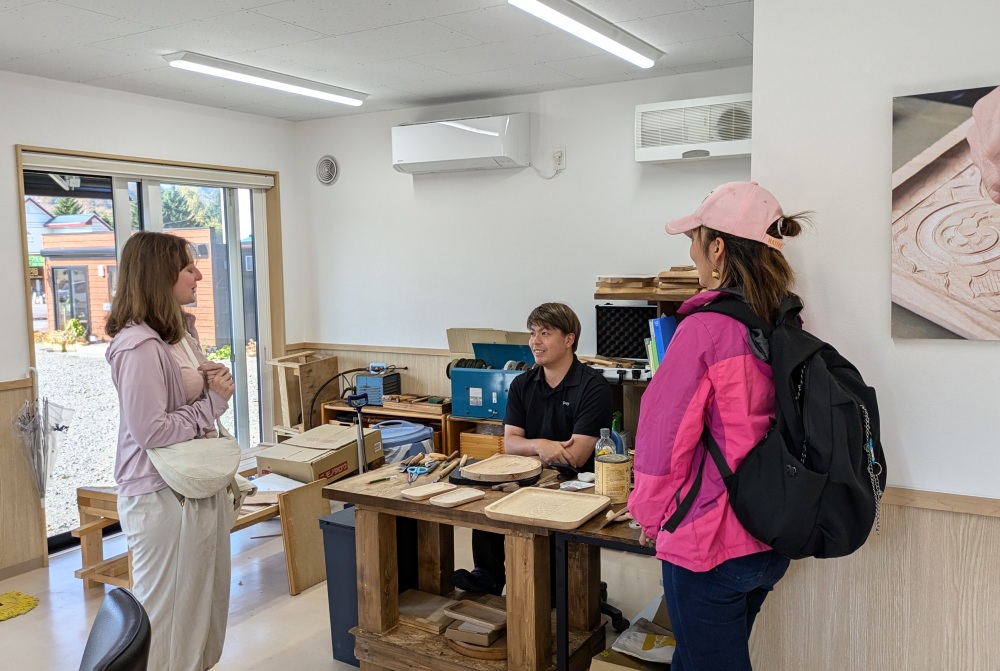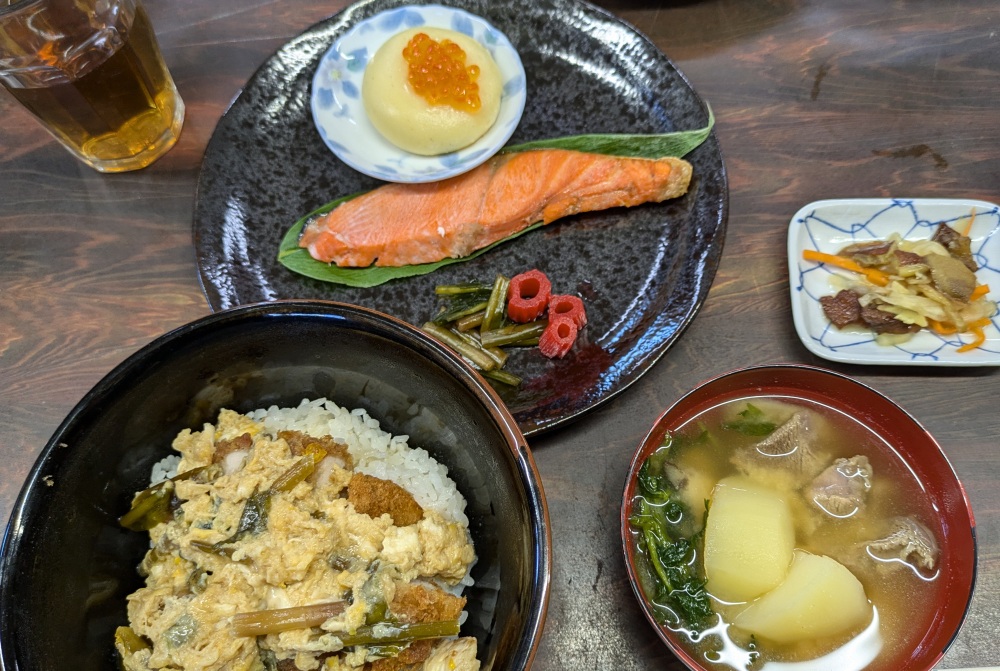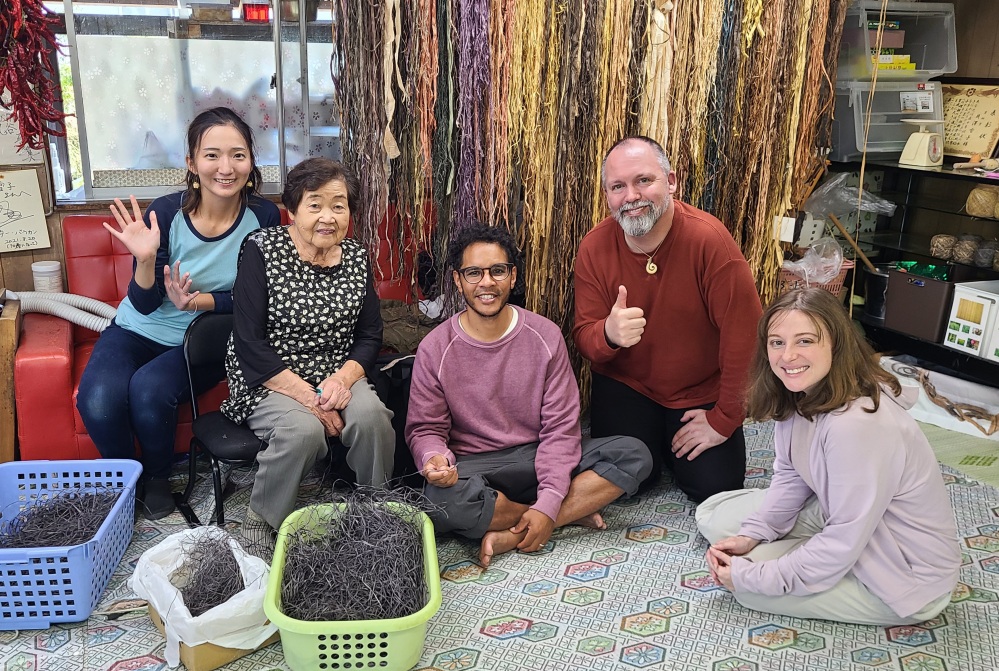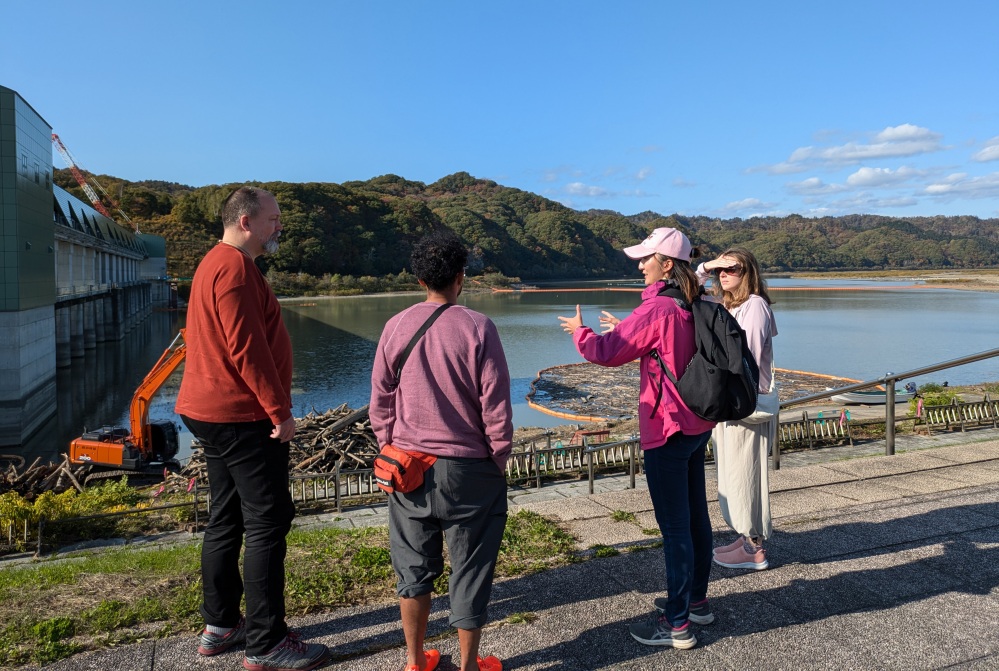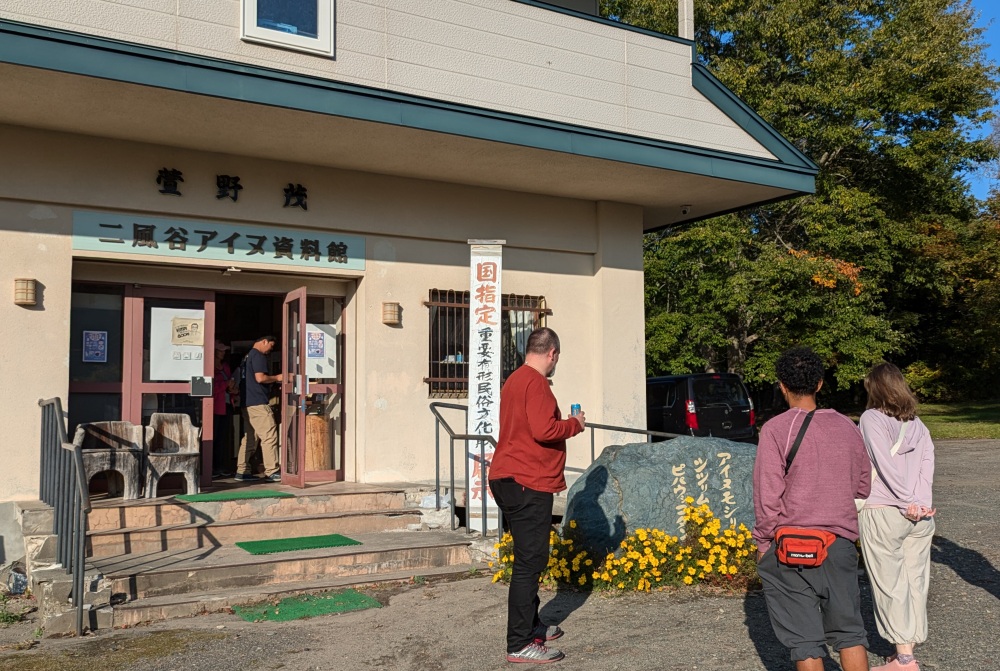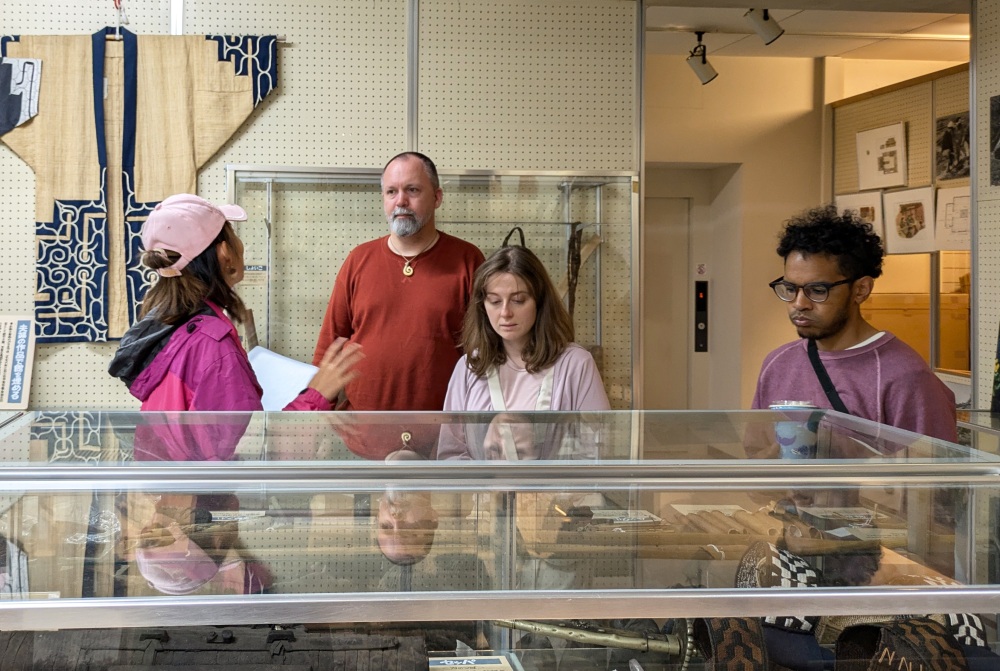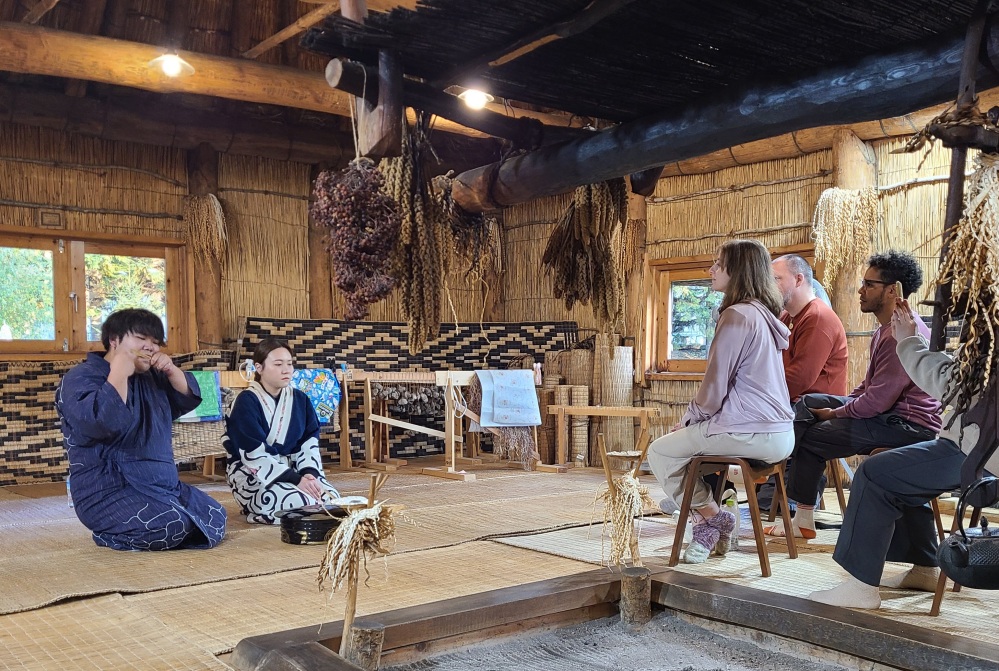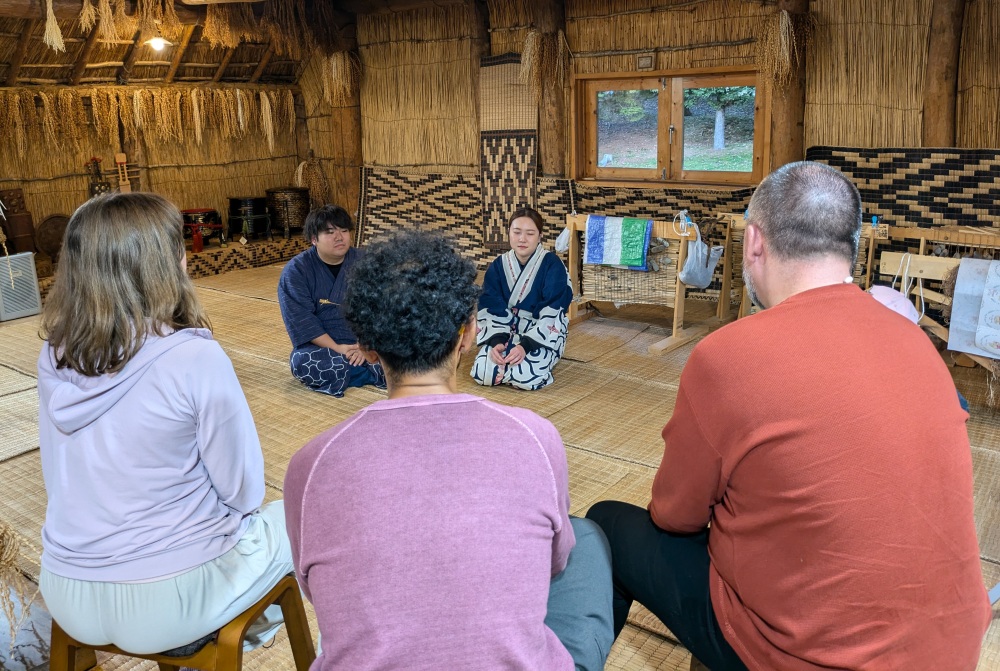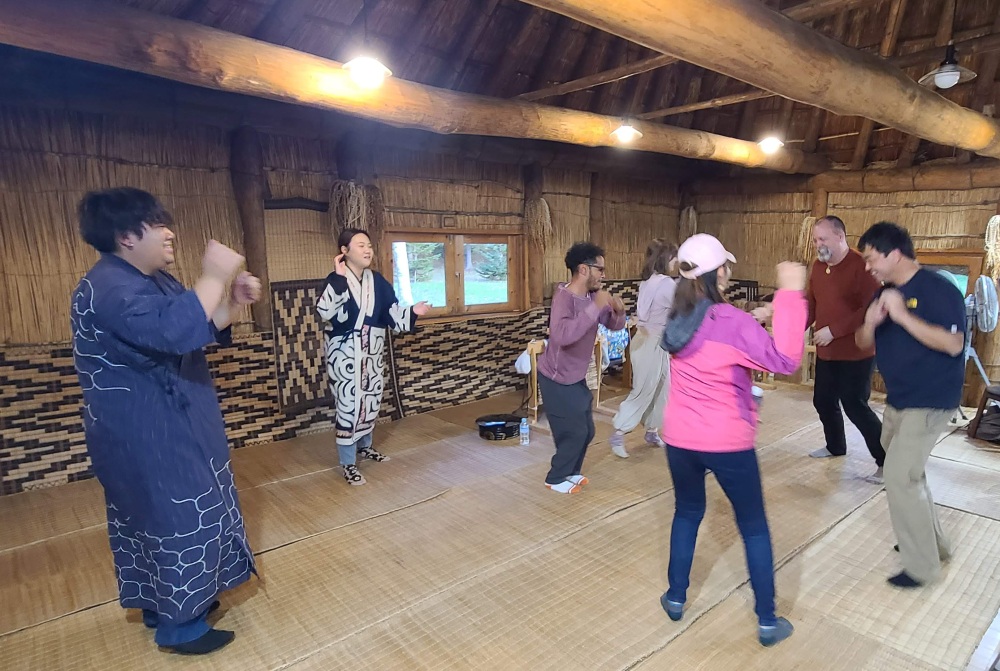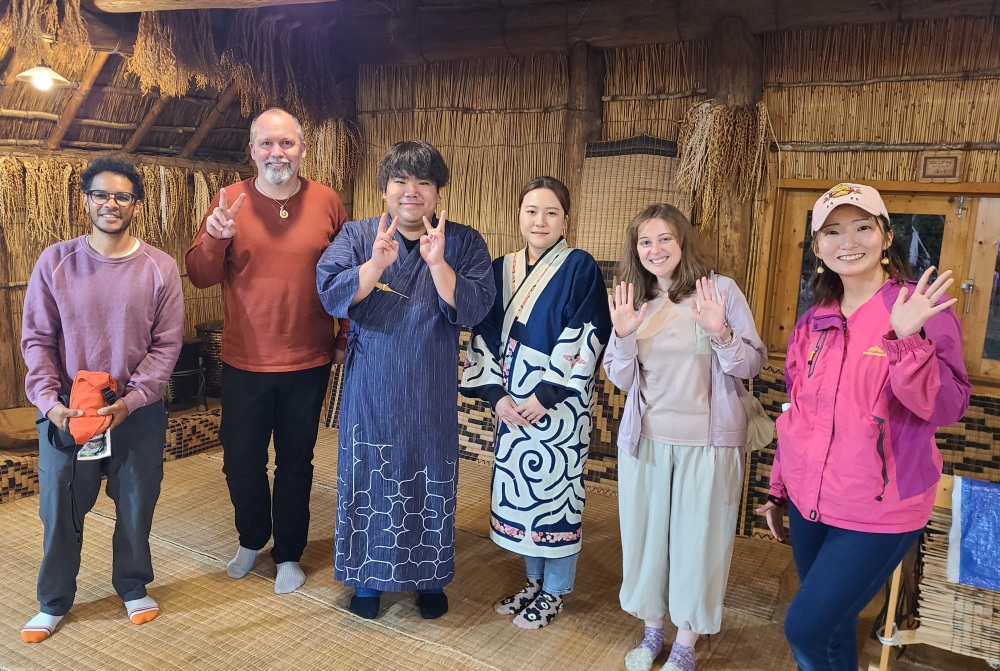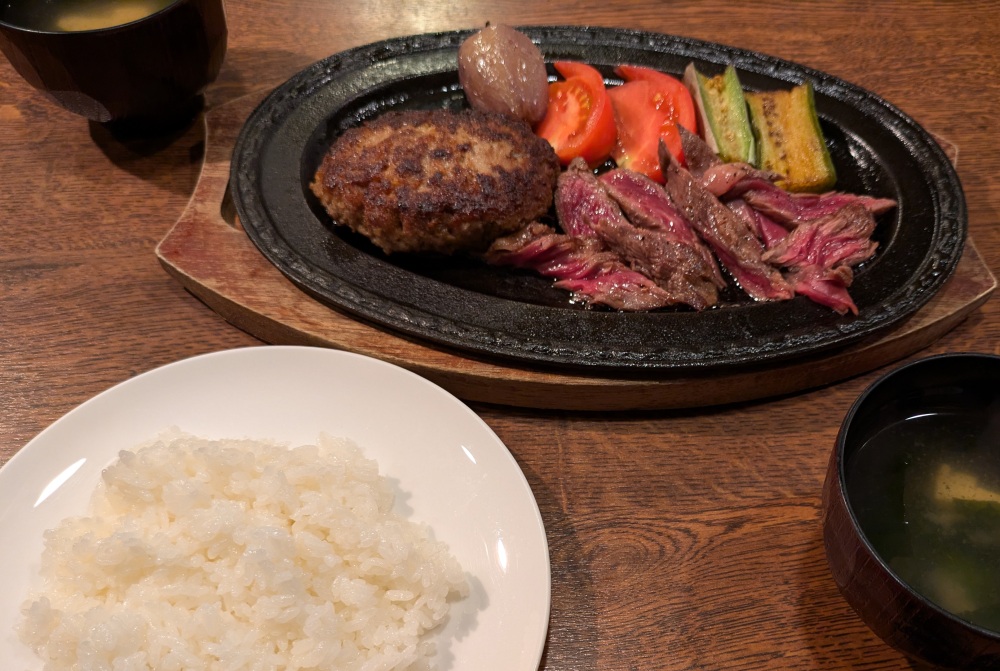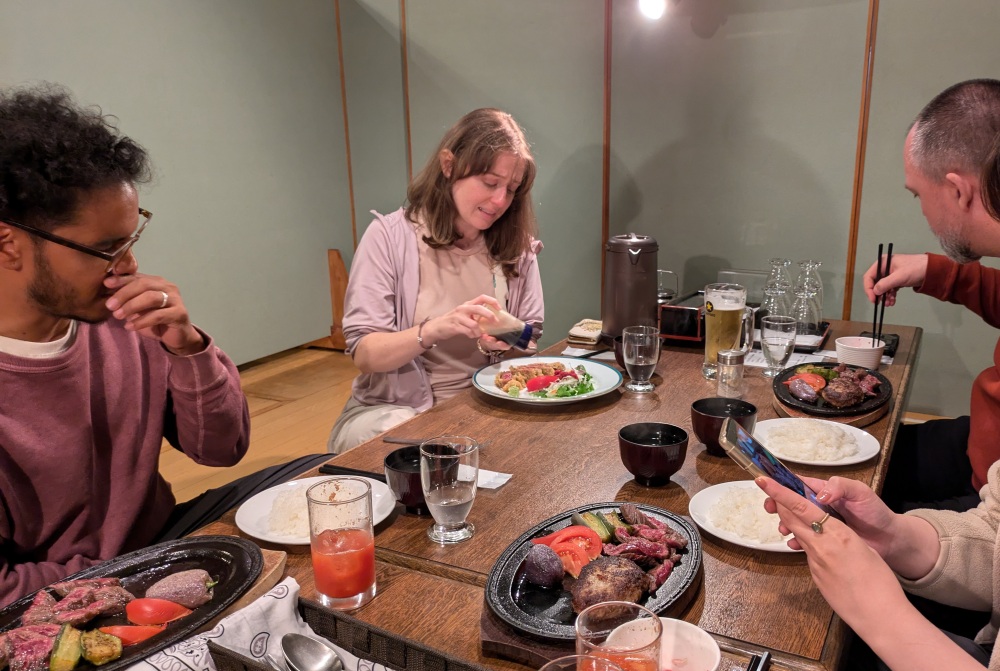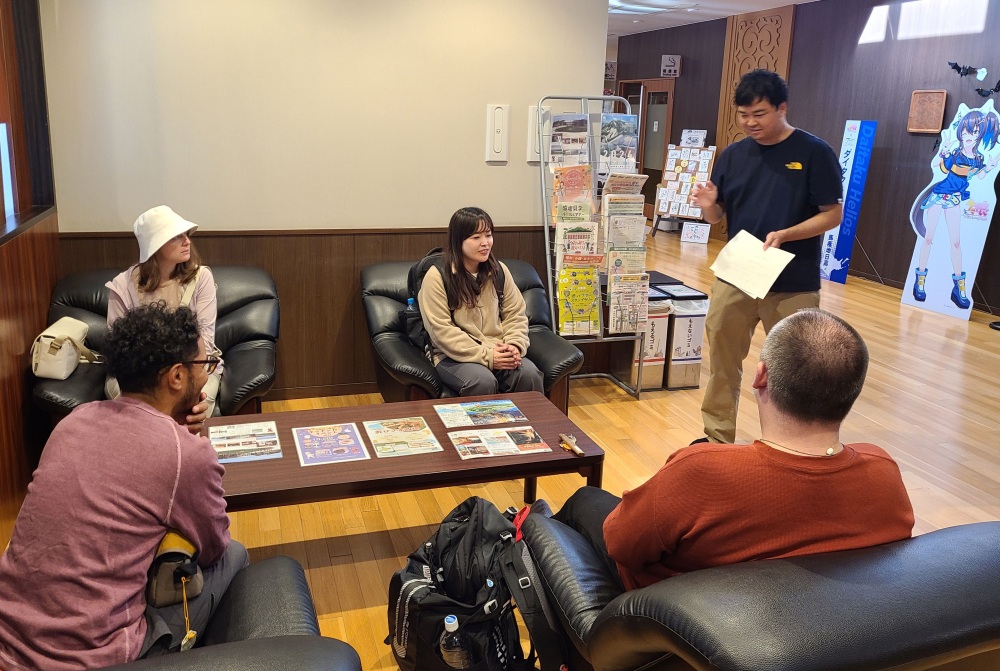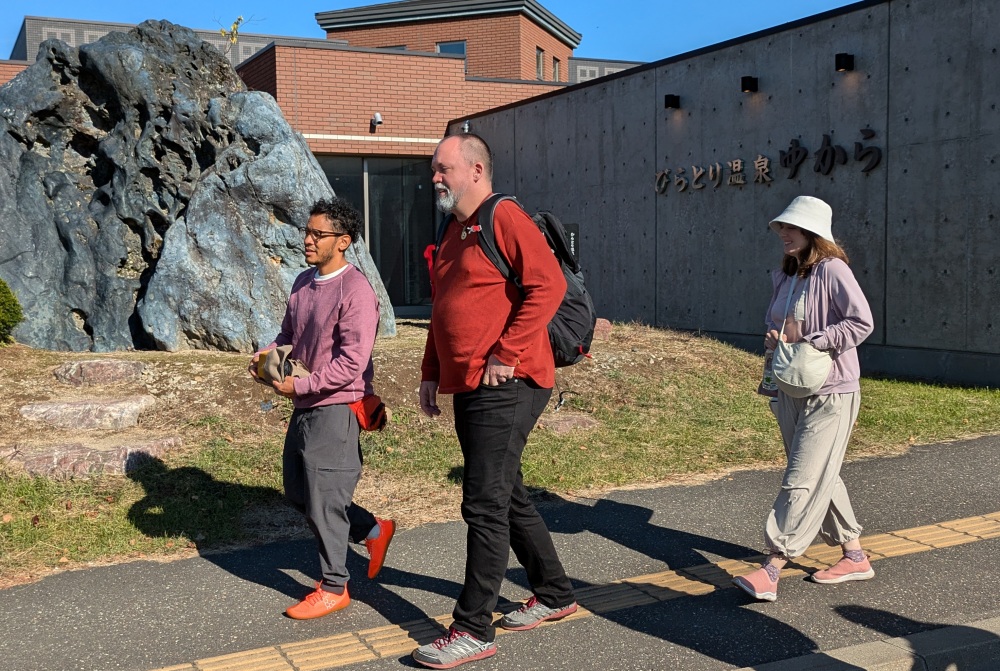Adventure travel for 3 nights and 4 days enjoying Lake Shikotsu and Biratori!
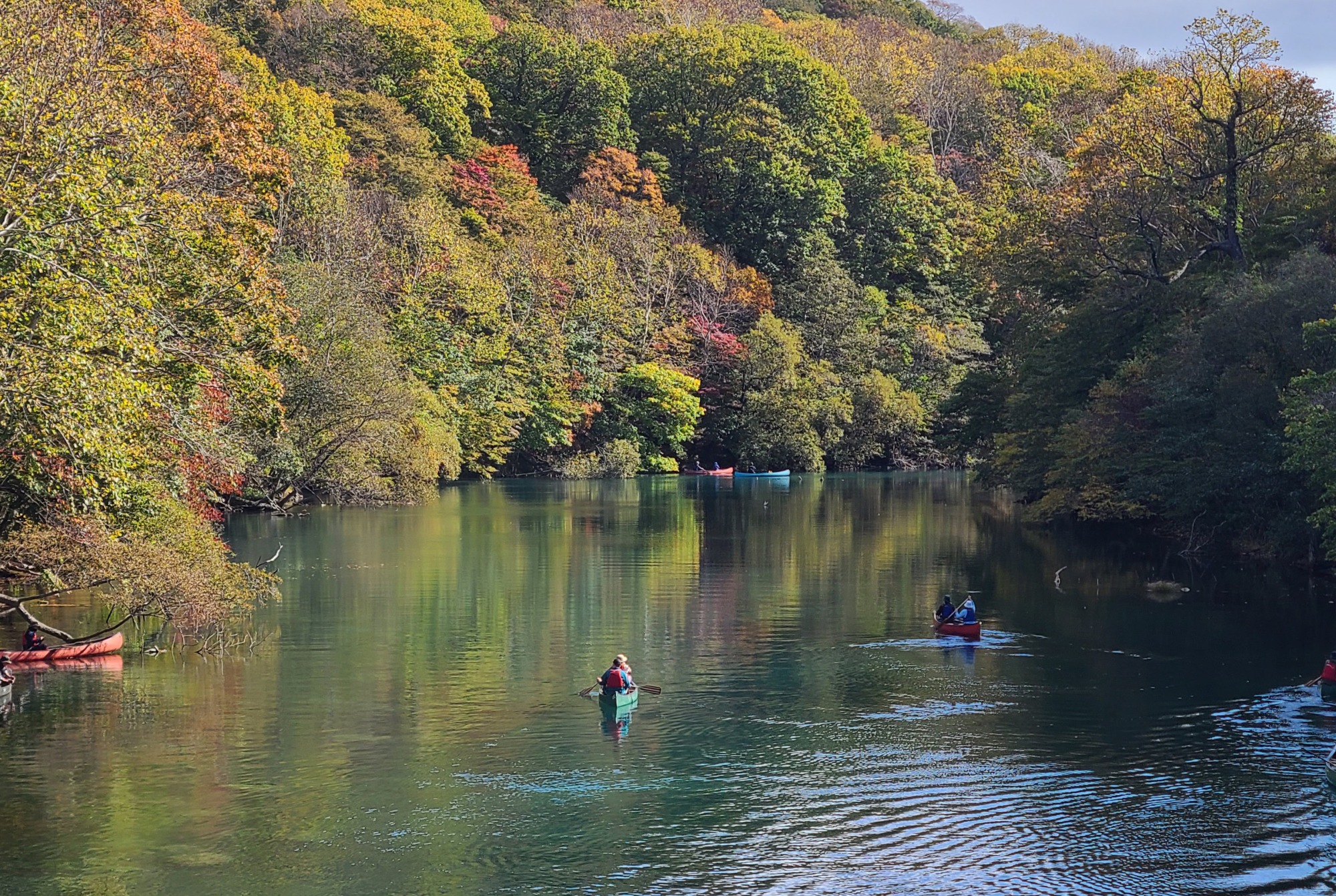
After canoeing on Lake Shikotsu, known as the northernmost ice-free lake, and captivating people with its beautiful natural scenery, visit the Nibutani area in the town of Biratori to experience the Ainu culture that has been passed down to the present day. This 4-day/3-night trip will satisfy all three elements of adventure travel: activity, nature, and culture!
- * Please note that the text shown on this page includes machine translations.
Let's head to Lake Shikotsu from Sapporo!
Three of us, Jeremy from the U.S., Glenn from Australia, and Hattie from the U.K., set out on this trip. We first gathered at Sapporo Station and drove to Lake Shikotsu.
Learn the basics at the Lake Shikotsu Visitor Center!
After arriving at Lake Shikotsu, visit the Lake Shikotsu Visitor Center located by the lake. The three visitors learned about the history and nature of Lake Shikotsu.
Relax at an inn with a theme of healing and health.
The first night's stay is at “Lake Shikotsu Tsuruga Resort Spa MIZU NO UTA”, a short walk from Lake Shikotsu Visitor Center. It is a forest and lake resort and spa with the theme of healing and health.
Canoeing experience to enjoy the beauty of Lake Shikotsu!
It was a beautiful sunny morning and a perfect day for canoeing. We left the hotel and headed for “Shikotsu Guide House Canoa” which will guide us on the canoe tour of Lake Shikotsu. After hearing about today's course and the condition of Lake Shikotsu from the guide, we will have a lecture on how to ride and maneuver a canoe, and then we will start the tour.
Canoa's tours are mainly based at the headwaters of the Chitose River, the only water outlet of Lake Shikotsu, which is relatively unaffected by wind and waves. This time, we asked the guests to ride in a canoe in pairs, while the guide guides in another canoe. All three were very satisfied with the canoe tour, which included a coffee break along the way. Glen was especially impressed, saying, “It's wonderful to have such an experience so close to the airport! Glen was especially impressed.
Visit the Nibutani district of Biratori Town, where Ainu culture still remains!
About an hour and a half drive from Lake Shikotsu, we arrived at Nibutani Kotan in the town of Biratori. Nibutani is an area where many of its residents have Ainu roots and have inherited the Ainu culture. In addition to facilities related to Ainu culture, many chise (houses) have been restored in the kotan. The group visited the “Biratori Town Nibutani Ainu Culture Museum” to learn basic knowledge about Ainu culture in preparation for tomorrow's tour.
The inn boasts natural hot springs, carbonic acid baths, and cuisine.
The inn for the second and third days is “Biratori Onsen Yukara. This hot spring accommodation is located within the Nibutani Family Land, which has a park golf course, campground, tennis courts, and other facilities. The baths feature highly concentrated carbonated spring water, which is rare in Hokkaido, and the restaurant is popular for its dishes using “Biratori Wagyu” beef and “Nisipa no Koibito” tomatoes from Biratori.
Special programs to touch the spirit and lifestyle of the Ainu people!
Start of an experience to learn more about the Ainu culture with a guide from NEPKI, a guide company in town, making it more accessible, fun and in-depth. When the Ainu enter the forest, they greet the forest. After greeting the Kamui (gods) and praying for safety in a traditional Ainu prayer ceremony, we walked through the forest of Biratori, listening to stories about the relationship between forest lore, plants and trees, and daily life.
The chise of Nibutani Kotan is faithfully reproduced with the same natural materials that people used to live with, including reed-thatched roofs from the Saru River basin. Inside the chise, Ainu craftspeople work on wood carving and embroidery on a rotating basis.
The Nibutani area is lined with workshops of artists who preserve traditions, including the traditional crafts of “Nibutani Ita” and “Nibutani Attus. The three were introduced to Ainu craftsmanship through casual conversation at the workshops. It was impressive to see the lively conversation between Hattie, who has her roots in a European minority tribe, and the young Ainu artists.
For lunch today, we visited the artist's workshop in Nibutani Attus and were treated to a home-cooked meal. The three of us couldn't stop clutching our chopsticks as we enjoyed a menu of modernized dishes based on traditional Ainu cuisine, including dishes using wild vegetables and salmon, as well as ohau (soup). Jeremy said, “It's simple but has a deep flavor."
After a hearty lunch, we went to Nibutani Dam to refuel. This is where the Ainu plaintiffs filed the “Nibutani Dam Trial,” challenging the illegality of the dam construction project and the land expropriation decision, and won the first court decision recognizing the Ainu as an indigenous people. Afterwards, we visited the Kayano Shigeru Nibutani Ainu Museum, where Mr. Kayano Shigeru, one of the plaintiffs, was the director. We learned more about the daily life of the Ainu people at the facility, which houses and exhibits Ainu folk tools collected by Mr. Kayano, as well as souvenirs and daily utensils from ethnic groups around the world.
The last part of the Nibutani Ainu tour was an Ainu dance and song performance in a chise. The Ainu youths who carry on the traditions performed “festival songs” for the Kamui festival and “sitting songs” that are sung when everyone gathers together, and the unique rhythms and melodies of these songs intrigued the three participants. After everyone enjoyed a round dance while singing together, it was time for a discussion about the indigenous people and their traditional culture. The three were able to deepen their knowledge and awareness of the Ainu through the half-day tour.
On the third night, enjoy a full dinner of Biratori Wagyu beef!
Tonight's dinner was at Jankenpon, a restaurant popular for its hamburgers and steaks made from Biratori Wagyu beef. Of course, we chose the most popular “hamburger steak and cut steak set. The juicy, tender, and rich taste of the meat itself is so good that you can't help but shout, “Delicious!"
Let's return to Sapporo while enjoying the afterglow!
On the fourth day back in Sapporo after their trip to Lake Shikotsu and Biratori, the three of them reflected on their trip in the lobby of their hotel. They commented on the beauty of the water at Lake Shikotsu, how they could learn a lot from the Ainu people, who were ahead of the SDGs, and the beauty of the Ainu crafts. The Ainu crafts are so beautiful! And all three agreed that “Lake Shikotsu and Biratori are definitely worth a return visit. It was a four-day, three-night tour that greatly stimulated their intellectual curiosity.
Ranking of popular articles
- Hokkaido Summer Travel Guide
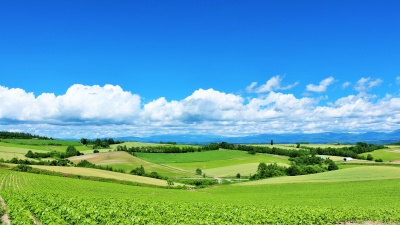
- https://www.visit-hokkaido.jp/en/feature/travelguide_summer
- Hokkaido Spring Travel Guide
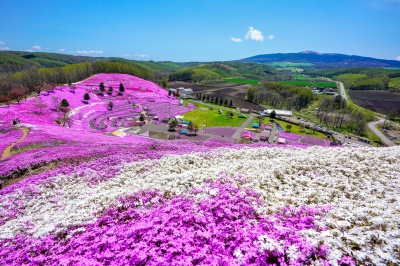
- https://www.visit-hokkaido.jp/en/feature/travelguide_spring
- Here are the recommended cherry blossom viewing spots!
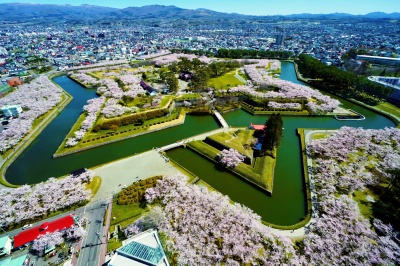
- https://www.visit-hokkaido.jp/en/feature/sakura
- When is the best time to see lavender? Recommended Lavender Spots in Hokkaido
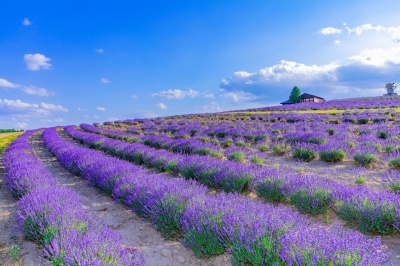
- https://www.visit-hokkaido.jp/en/feature/lavender
- Best Places to View Flowers in Hokkaido vol. 1

- https://www.visit-hokkaido.jp/en/feature/best-places-to-view-flowers-in-hokkaido-vol-1
